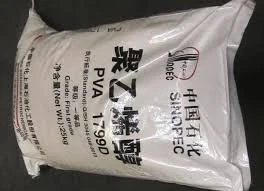Cellulose for Industrial Applications A Versatile Biopolymer
Cellulose is one of the most abundant organic polymers on Earth, primarily found in the cell walls of plants. This biopolymer is composed of linear chains of glucose molecules linked by β-(1→4) glycosidic bonds, forming a rigid, fibrous structure. While cellulose is often associated with paper production and textiles, its applications extend far beyond these traditional uses, particularly in various industrial sectors. This article explores the diverse applications of cellulose in industries ranging from food to pharmaceuticals, and highlights its importance in promoting sustainability.
1. Cellulose in the Food Industry
In the food industry, cellulose serves multiple roles, primarily as a thickening agent, stabilizer, and emulsifier. It is used in low-fat and low-calorie food products to improve texture and mouthfeel. Methylcellulose and carboxymethylcellulose, derivatives of cellulose, are commonly utilized in processed foods such as ice creams, salad dressings, and baked goods. These cellulose derivatives not only enhance the appearance and taste of food products but also help to retain moisture, thereby extending shelf life. Moreover, cellulose-based dietary fibers are increasingly being added to foods to promote health benefits, including improved digestion and satiety.
2. Cellulose in Pharmaceuticals and Medical Applications
The pharmaceutical industry relies on cellulose for its versatility and biocompatibility. Cellulose derivatives such as hydroxypropyl methylcellulose (HPMC) and microcrystalline cellulose (MCC) are widely used as excipients in tablets and capsules. These materials aid in drug formulation by improving the flow properties of powders, enhancing compression, and controlling the release of active ingredients. Beyond drug formulation, cellulose is also employed in the production of wound dressings, hydrogels, and medical implants due to its excellent moisture retention and biocompatibility.
3. Cellulose in Textiles and Nonwovens
The textile industry has long utilized cellulose fibers, particularly cotton and rayon, due to their comfort, breathability, and biodegradability. Rayon, a regenerated cellulose fiber, is used in a wide range of garments and home textiles. In addition to traditional textiles, cellulose is increasingly used in the production of nonwoven fabrics, often found in hygiene products such as diapers and feminine care items. These nonwovens are valued for their softness, absorbency, and ability to be engineered for specific performance characteristics.
'cellulose for industrial'

4. Cellulose in Construction and Packaging
Cellulose is gaining momentum in the construction industry as a sustainable building material. It is often used in the form of cellulose insulation, made from recycled paper products, which provides excellent thermal and acoustic insulation while minimizing energy consumption. In packaging, cellulose materials are becoming an alternative to petroleum-based plastics. Cellulose-based films and coatings are utilized for their biodegradable properties and ability to provide a good barrier against moisture and gases, making them suitable for food packaging.
5. Environmental Benefits and Sustainability
One of the most compelling advantages of cellulose is its renewability and biodegradability. As society increasingly focuses on sustainability, cellulose presents a viable solution to reduce dependency on fossil fuels and non-biodegradable materials. Its production from plant sources means that it is often more sustainable than synthetic polymers, and ongoing research continues to explore innovative techniques for upcycling waste cellulose into valuable products.
6. Future Directions
The potential applications of cellulose are boundless. Ongoing research is geared towards enhancing cellulose's properties and functionalizing it for advanced applications, including nanotechnology and the development of smart materials. The creation of nanocellulose—derived from the breakdown of cellulose fibers—has shown promising potential for use in lightweight composites, electronics, and even as a filler in various industry applications.
In conclusion, cellulose is a versatile biopolymer that plays a crucial role in numerous industrial applications. Its diverse properties and environmentally friendly nature make it an essential material in today's sustainable development landscape. As industries seek greener alternatives, cellulose stands out as a valuable asset with a promising future across multiple sectors.
-
A Comprehensive Guide to Methyl Ethyl Hydroxyethyl Cellulose: Applications and Industry InsightsNewsNov.24,2025
-
Understanding Methyl 2 Hydroxyethyl Cellulose: Uses, Benefits & Industry InsightsNewsNov.24,2025
-
Hydroxyethyl Methyl Cellulose HEMC: Industrial Uses, Benefits & Future TrendsNewsNov.23,2025
-
HEMC Cellulose: Versatile & Sustainable Industrial Polymer | YoungcelNewsNov.23,2025
-
Methyl Hydroxyethyl Cellulose: Versatile Building Block for Industry & SustainabilityNewsNov.23,2025
-
CAS 9032 42 2: Understanding Polyvinyl Alcohol's Impact on Industry & SustainabilityNewsNov.22,2025




